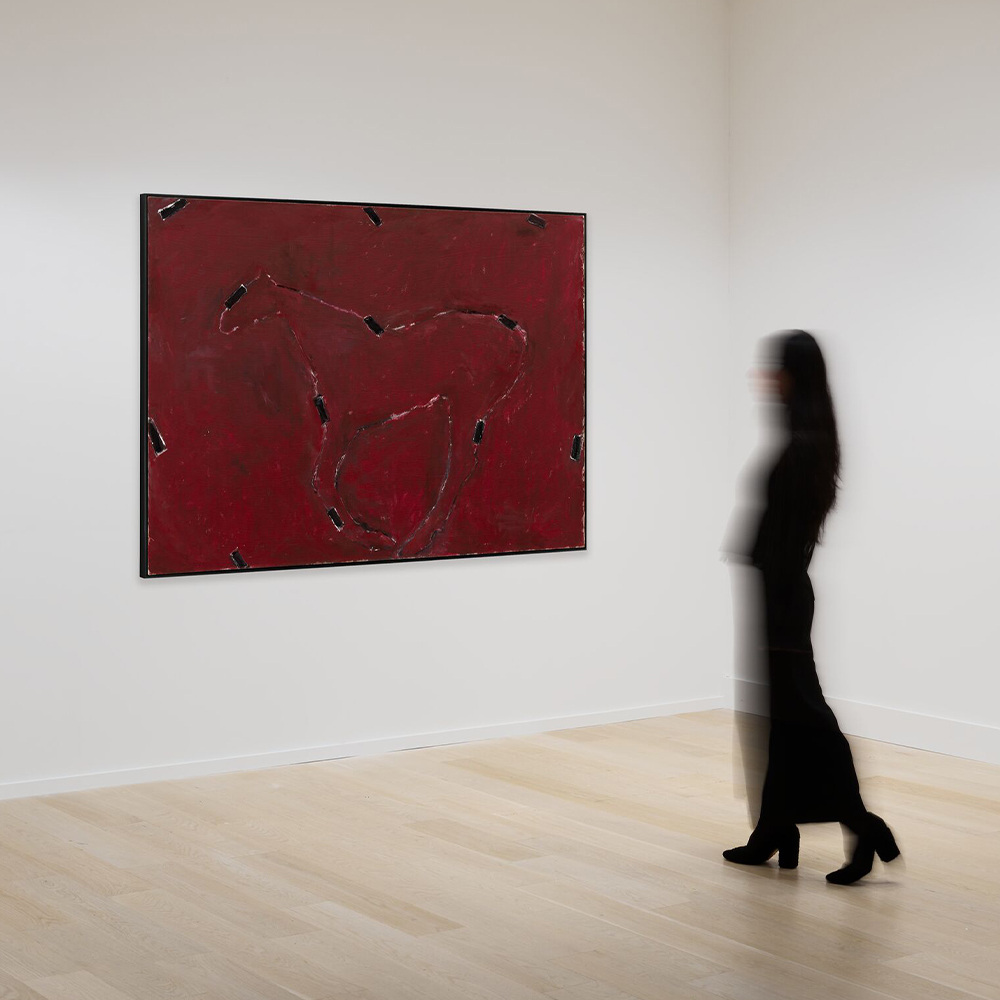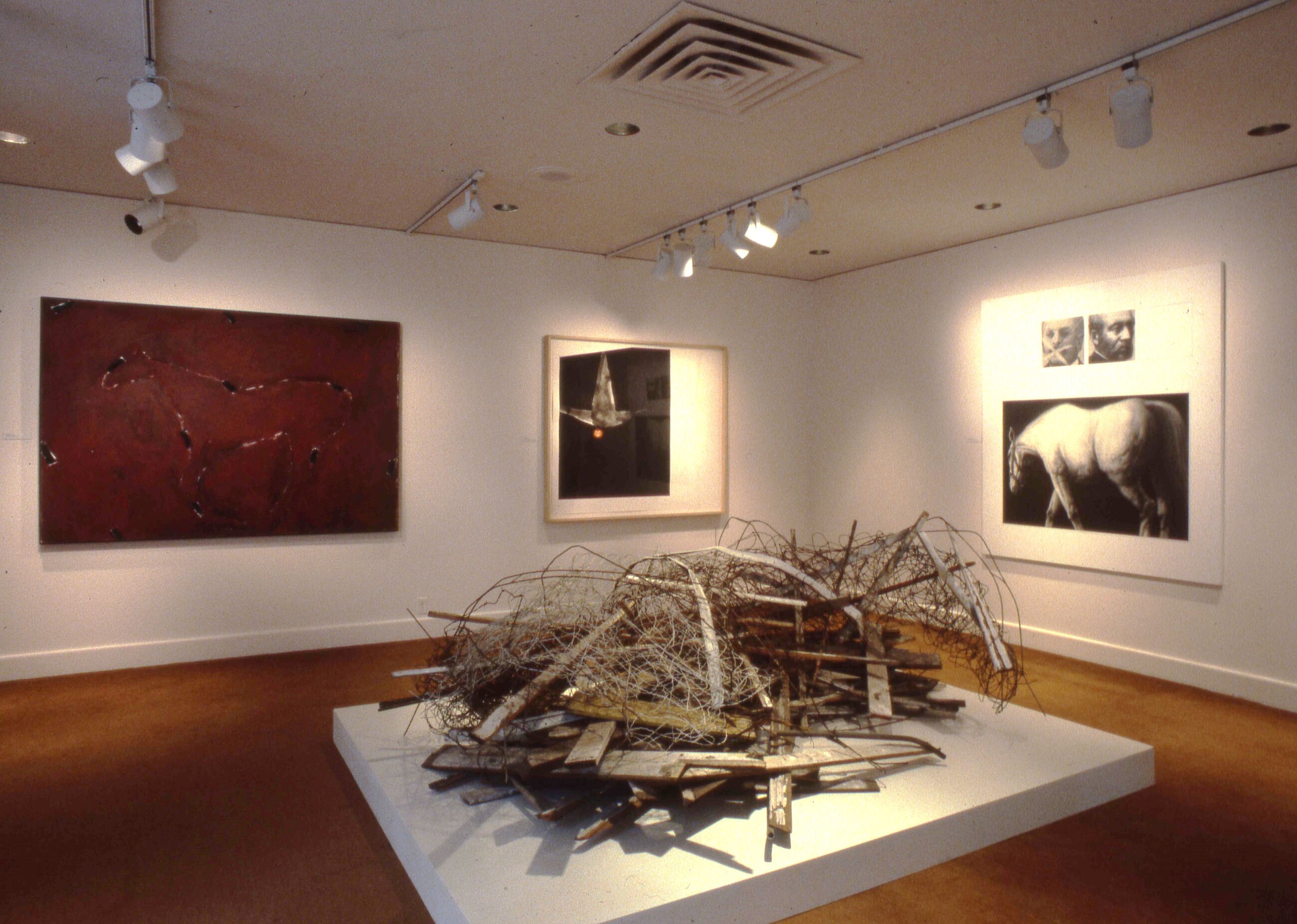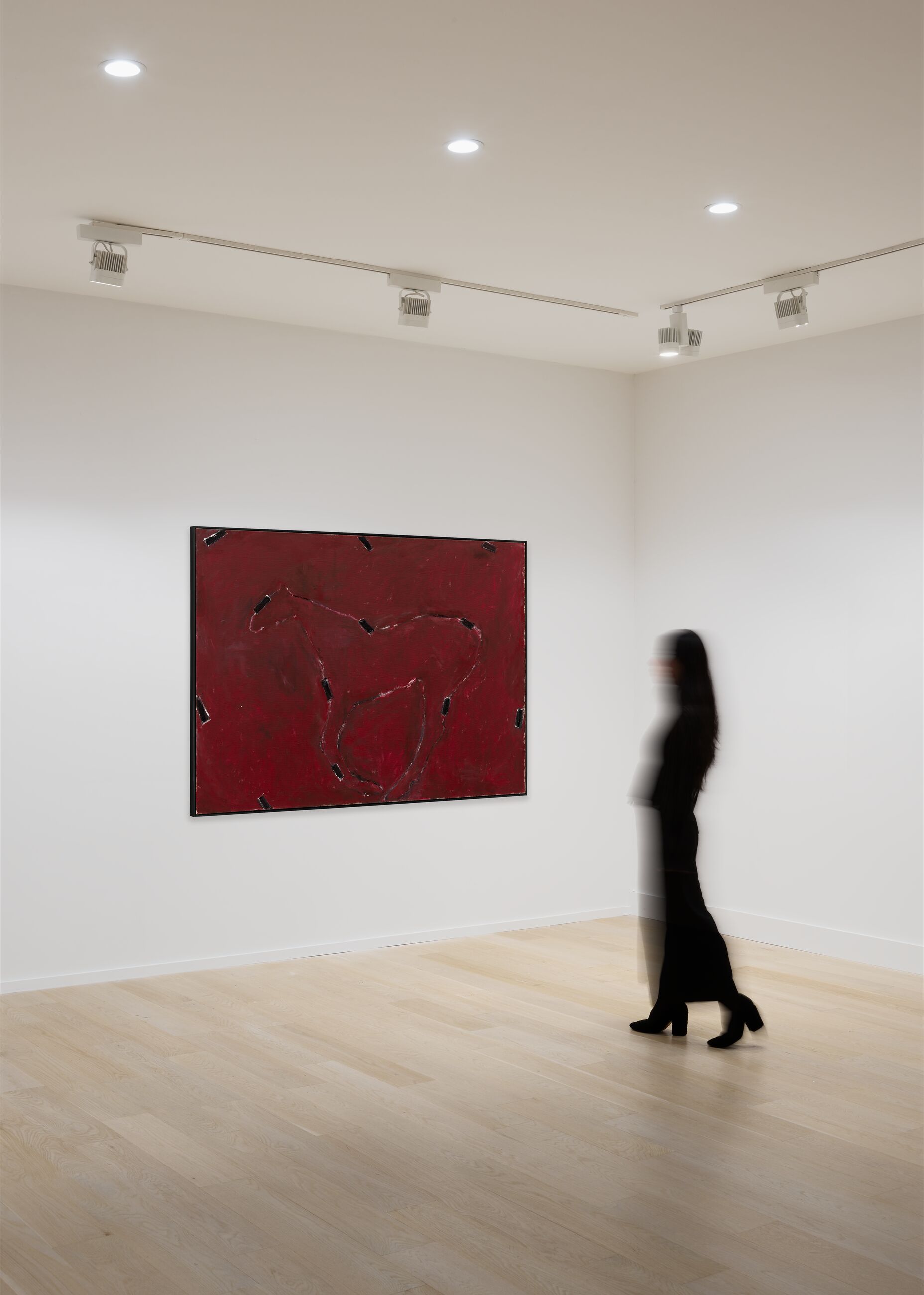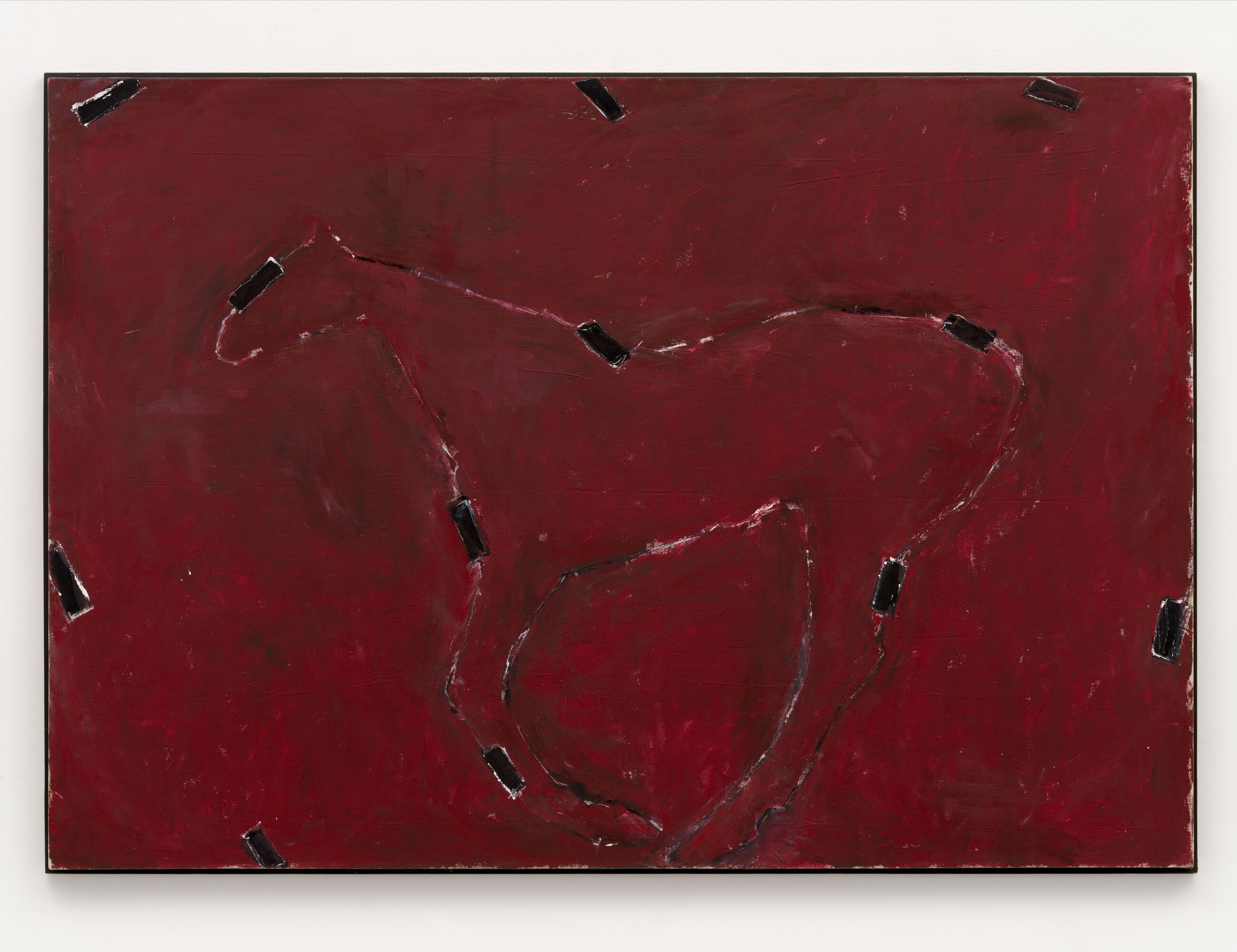In 1974 Susan Rothenberg transformed the history of painting with her singular and iconic body of horse paintings. ‘Black Blocks’ (1977)—first exhibited at P.S.1 Contemporary Art Center (now MoMA P.S.1) in 1977—is one of the supreme examples of her inventive new approach to painting and figuration.
1 / 2
Susan Rothenberg
Black Blocks
- 1977
- Acrylic on canvas
- 139.7 x 202.6 cm / 55 x 79 3/4 in
Susan Rothenberg’s iconic ‘Black Blocks’ (1977) will be presented by the gallery at Art Basel 2025.
‘Black Blocks’ features the silhouette of a horse in profile. The galloping horse is rendered in a feathery white line, overlaid with—as the title suggests—simple black blocks that trace the contours of the figure’s musculature. The painting’s lush burgundy ground is animated by Rothenberg’s agitated brushwork.

‘The horse was a vehicle for me, I think in the same way Jasper Johns had to use his imagery… I think it was a surrogate for dealing with a human being, but at the same time it was neutral enough and I had no emotional relationship to horses, so it really was a powerful object that divided asymmetrically but seemed to present a solid symmetrical presence.’ [1]
Susan Rothenberg
‘Black Blocks’ advances and revises a richly informed art history rooted as much in the legacies of Fauvism as Abstract Expressionism and Colour-Field painting. As is characteristic of Rothenberg’s horse paintings, it incorporates insights from the geometries of Minimalism, the energy of avant-garde dance and the timeless power of an archaic ritual or cave-painting.

Installation view, ‘A New Bestiary: Animal Imagery in Contemporary Art,’ Institute of Contemporary Art of the Virginia Museum of Fine Arts, Richmond VA, 1981. Courtesy VMFA Photo Archives

About the artist
Susan Charna Rothenberg was born in Buffalo, New York, in 1945. She received her BFA from Cornell University in Ithaca, New York, in 1967, having studied painting and sculpture. During and after college, Rothenberg traveled to Greece and Spain, respectively, briefly attending the Corcoran School of Art, then moving in 1969 to New York City, where she lived for the next twenty years.

Art Basel
Susan Rothenberg’s iconic ‘Black Blocks’ (1977) will be on view in our presentation at Art Basel alongside exceptional 20th-century and contemporary works by artists such as Philip Guston, Louise Bourgeois, Mark Bradford, Roni Horn and more.
[1] Susan Rothenberg in Joan Simon, ‘Susan Rothenberg,’ New York NY: Harry N. Abrams, 1991, p. 29.
Artwork: Susan Rothenberg, Black Blocks, 1977 © 2025 The Estate of Susan Rothenberg / Artists Rights Society (ARS), New York. Photo: Stephen Arnold, courtesy The Susan Rothenberg Foundation; Portrait of Susan Rothenberg, Santa Fe, New Mexico, 2012. Photo: Annie Leibovitz © Annie Leibovitz; Philip Guston, Migration (detail), 1978 © The Estate of Philip Guston. Photo: Sarah Muehlbauer

